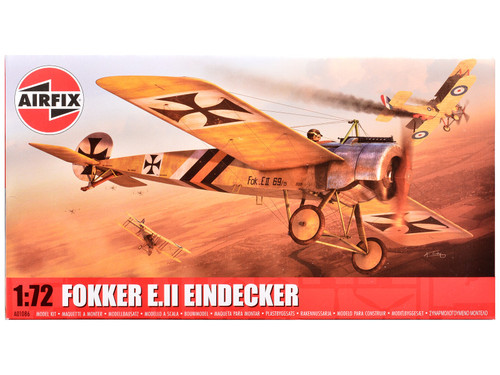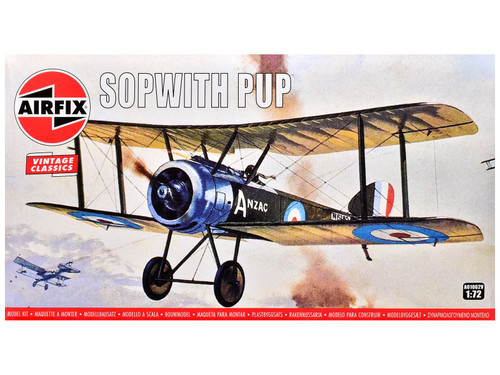Product Description
- Brand new plastic model kit of Fokker E.II Eindecker Fighter Aircraft (Level 2) 1/72 plastic model kit by Airfix.
- Brand new box.
- Vintage style packaging.
- Officially licensed product.
- Contains 35 detailed parts.
- Does NOT include display stand.
- Paint and cement required (not included).
- Manufacturer's original unopened packaging.
- Parts molded in Light Gray, unless otherwise indicated.
- Dimensions approximately L-4, W-5.5 inches assembled.
HISTORY ASPECTS:
The Fokker E.II Eindecker, flown by Kurt von Crailsheim of FFA 53 at Monthois, France, in October 1915, was one of the pioneering fighter aircraft of World War I. Following the introduction of the synchronization gear that allowed a machine gun to fire through the propeller arc, the Eindecker series became the first true German fighter, giving pilots like von Crailsheim a decisive advantage over Allied reconnaissance aircraft. The E.II, an early development of the series, featured a single 80 hp Oberursel rotary engine, a wooden monoplane airframe, and a synchronized 7.92 mm LMG 08/15 machine gun. Its agility and firepower made it highly effective in the evolving aerial combat of the Western Front.
During his service with FFA 53, Kurt von Crailsheim used the E.II primarily in patrol and interception missions over the Champagne sector. The aircraft’s speed and maneuverability allowed him to engage Allied aircraft, disrupt reconnaissance operations, and protect German ground forces from observation and artillery spotting. Although the Eindecker’s limited range and fragile structure imposed operational constraints, it was instrumental during the period known as the “Fokker Scourge,” when German pilots dominated the skies and forced Allied aviators to adapt new tactics to counter the monoplanes.
The E.II Eindecker, while eventually outclassed by newer Allied fighters, marked a revolutionary step in air combat. Pilots like von Crailsheim contributed to the development of aerial tactics, including the use of energy management, surprise attacks, and coordinated patrols. Its role in 1915 demonstrates the rapid technological and tactical evolution occurring during World War I, as air superiority became a critical component of battlefield success. The aircraft’s legacy endured, influencing the design and employment of future fighter aircraft for both sides.
This 1:72 scale model captures the delicate monoplane lines, wire-braced structure, and period-accurate markings of this pioneering fighter. A must-have for collectors and World War I aviation enthusiasts, it offers a detailed and historically faithful miniature of the aircraft that helped redefine aerial combat.



















